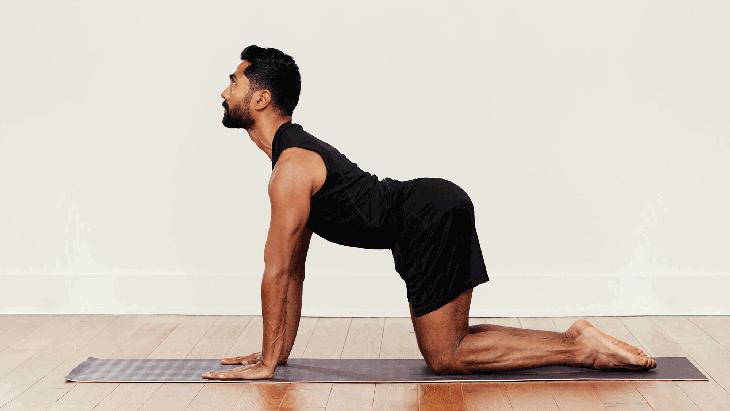7 Yoga Poses to Care for Your Overburdened Spine
- Oops!Something went wrong.Please try again later.
Have you ever heard that quote from Joseph Pilates: “You’re only as old as your spine is flexible”? Well, some days it might feel like you’re pushing 100. Whether you’re spending too many hours hunched over a screen or you’re constantly on your feet, chances are your back--and by extension, your spine--are in need of some relief. We reached out to Diana Zotos Florio, yoga teacher, physical therapist, and co-founder of Threes Physiyoga Method, for some insights on spinal health--and how yoga can help.
Why yoga for your spine is important
Your spine plays a key role in many aspects of your body’s physical health. From your back to your core, your spine supports many different muscle groups throughout your body. Having a healthy spine is not only important--it’s critical. When practicing yoga for your spine, Zotos says some of the key components to keep in mind include maintaining a connection to your back, stabilizing your spine as a whole, as well as individual segments, and intentionally thinking about the muscular effort in each pose.
See also: 8 Yoga Poses to Ease Lower Back Pain
7 yoga poses for your spine
Marjaryasana (Cat Pose) and Bitilasana (Cow Pose)
Warm up and engage your spine with these foundational postures. As you move through these poses, Zotos says you’ll bring awareness to your body as you engage your entire spine--from your lower back up to your neck. She says this type of movement targets each part of your spine with flexion (rounding) of the spine, and extension (arching) of the spine.
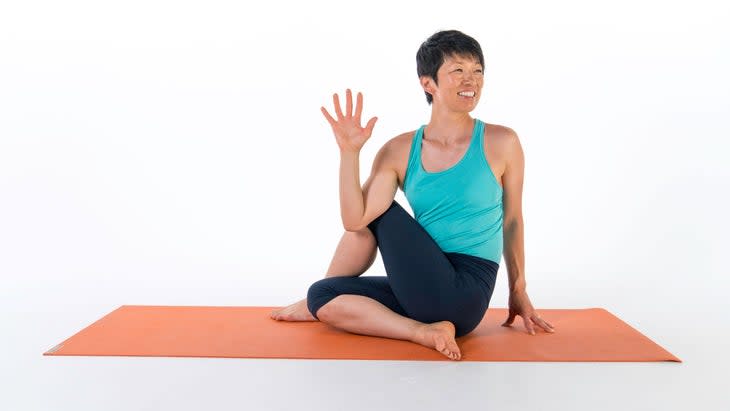
Ardha Matsyendrasana (Half Lord of the Fishes Pose)
This pose, also referred to as Seated Twist Pose, builds on the mobility work done in Cat-Cow, Zotos says. Instead of fully extending through your spine in this pose, Zotos recommends keeping it slightly rounded. As you move into the posture, be intentional with your twist. “Try imagining twisting like a spiral staircase,” she says. “Start at the bottom (or top) and rotate one segment at a time, with gentleness.”
Quadruped Plank
To work on the stability of your “global trunk,” Zotos recommends this modified Plank Pose. Not only does this modified posture prepare you for the full version, it also works on your spine’s stability. In this pose, you work on stabilizing your entire trunk, which encompasses the muscles and bones around your abs and back, Zotos says. “This is also where we can think about muscular effort supply and demand,” she says. “In [Quadruped Plank], there is less spine stability demand than more challenging poses, like Full Plank or Handstand, so we should meet that demand with less muscular force supply.” If you opt to progress to Plank Pose, she says you can increase the amount of muscular force and tension.
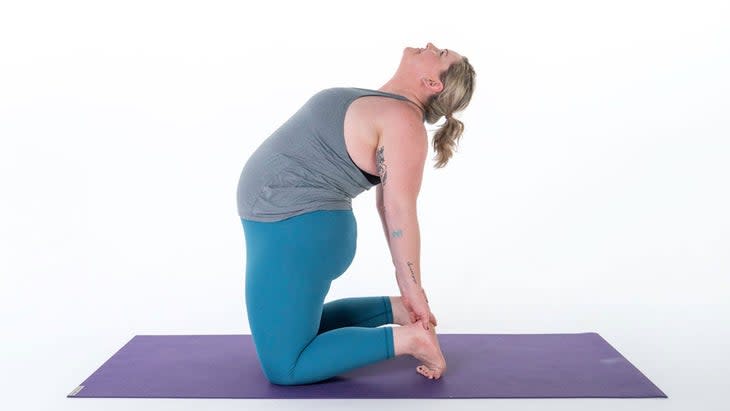
Ustrasana (Camel Pose)
In this pose, Zotos recommends drawing your attention to the concept of “local stability,” in which you focus on each individual segment of your spine--and the 360-degree tension surrounding each segment. She says to imagine your spine lengthening as a slinky and maintain that length even as you move into the backbend. “This helps share the load of the pose by activating the small stabilizing muscles in each segment, like the multifidus muscle group that spans just two or three segments of the spine,” she says.
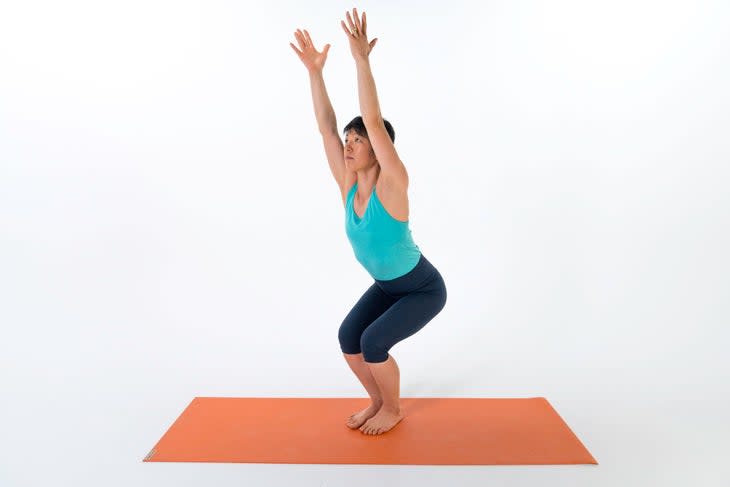
Utkatasana (Chair Pose)
This standing balance is actually one of the more demanding poses on your spine, Zotos says. In this pose, you have to work harder to stay upright, due to the positioning of the center of gravity, she says. “Think of the breath [as] an indicator light for spine health,” she says. “It tells us if we need to work on how we are achieving a pose in order to best support our spine.” When practicing this pose, look for a full diaphragmatic breath, the full expansion of the rib cage and an easy breath, she says. All of these factors point toward the posture supporting your spinal health.
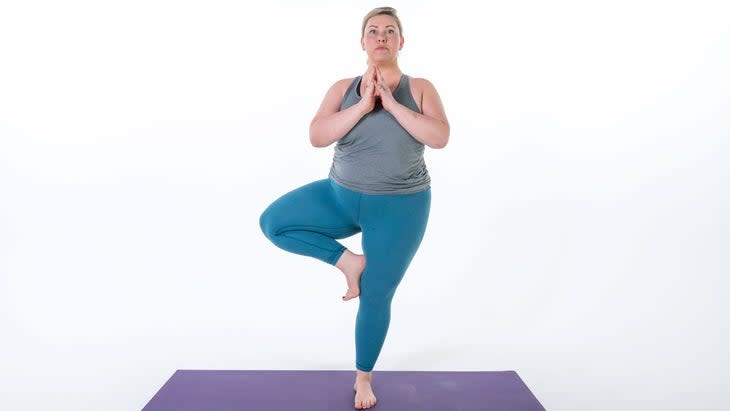
Vrksasana (Tree Pose)
This balancing posture can actually help you foster a robust spine. “[You] put all the pieces together in this pose, a pose you wouldn't consider to be a spine support pose, but can be if we are thinking about all the pieces of nervous, musculoskeletal, and respiratory system health,” she says. In this pose, focus on maintaining the correct curvature of your spine, Zotos says. As you stay in this posture, notice where you lose balance or stability, she says. Those are the components of your practice that you can continue to build on.
See also: 5 Yoga Poses to Ease Your Aching Neck
For exclusive access to all of our fitness, gear, adventure, and travel stories, plus discounts on trips, events, and gear, sign up for Outside+ today.
